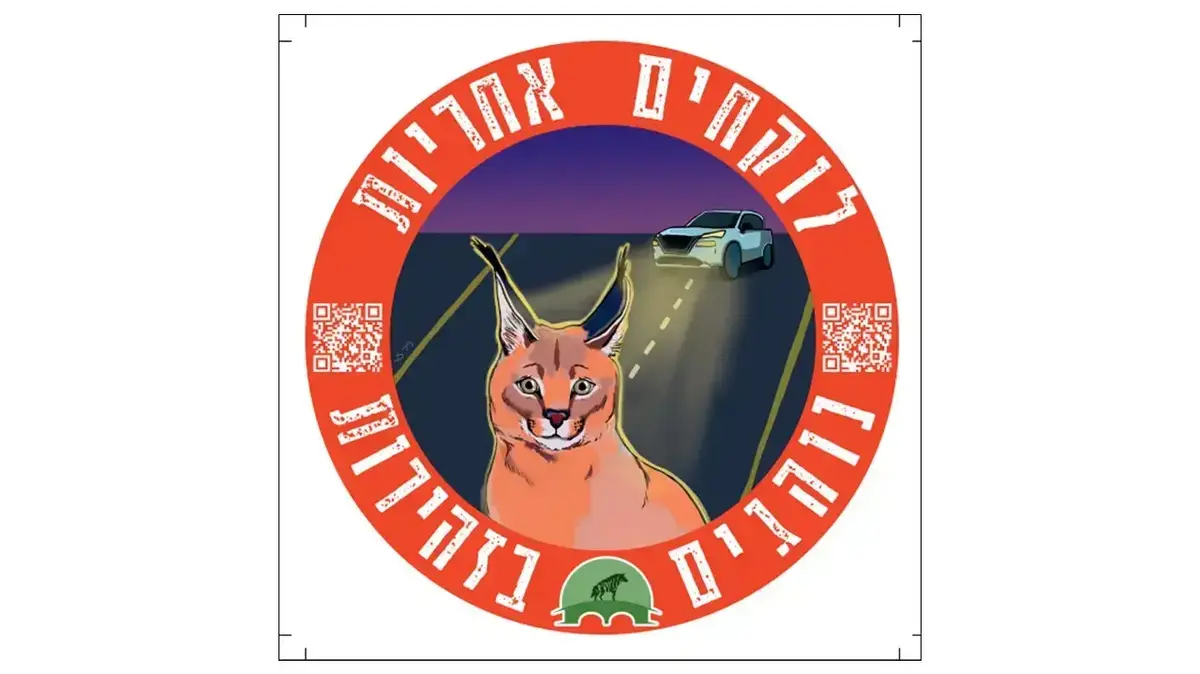Wildlife ramming incidents documented in Israel in 2022 (Photo: Safe passages for wildlife)
In 2022, about 1,500 cases of wildlife ramming have been documented in Israel, including 111 gazelles, 175 foxes, 199 porcupines and 411 jackals.
This time of year is considered high in wildlife activity, which poses a risk of further ramming incidents on the days of travel-heavy Shavuot. According to the organization Safe Passages for Wildlife, which works to create connectivity between nature areas in Israel in order to reduce incidents of vehicular attacks and harm to wildlife, the areas most prone to vehicular attacks are the Galilee, the Golan Heights and along Highway 90.
The most dangerous hours are dusk, and the hours immediately after dark and dawn, when wild animals, most of which are active mainly at night, emerge from their daytime hideouts in search of food, water and mates.
According to the organization, vehicular attacks that occur as a result of the fragmentation of habitats in wild areas by roads and infrastructure are the main cause of death of many wild animals, including endangered ones, such as deer and hyenas.
For example, of the causes of injury among gazelles, 33% of the cases are caused by being run over. For comparison: taking a puppy from its mother (13%), gender injury (9%), trapped leg (6%), or injury from another animal (6%).
One of the stickers that will be distributed to drivers (Photo: Illustrator: May Grossman)
On the occasion of Shavuot and in anticipation of travelers expected to fill the roads and natural sites during the holiday vacation, the organization will distribute stickers to the public with the slogan - Taking Responsibility, Acting Cautiously - to raise awareness of driving to protect the wildlife found in the area. The decorative stickers were illustrated by May Grossman and Noya Tzur and will be distributed at Agamon Hula, Ramat Gan Safari and Monheim Park.
Danielle Baram, one of the founders of Safe Passages for Wildlife: "We hope that the stickers will increase the alertness and attention of drivers to the possibility of encountering wild animals outdoors or on the side of the road, and will lead to a reduction in cases of harm in the field. In addition, the purpose of the stickers is to encourage the public to report any injured wild animal - to the Nature and Parks Authority or to his father Sherwood from the "For Wildlife Association" - in order to enable it to receive life-saving treatment."
More in Walla!
It's so delicious and simple: recipe for caramelized bananas
In association with Galil
Another sticker to be distributed to drivers (Photo: Noya Tzur)
How can you reduce the risk of running over wildlife?
1. Where possible, drive in the dark hours with high lights, which allow you to see the animals crossing from a greater distance. Many new cars from recent years have an automatic high light, which is weakened as soon as another vehicle comes in front of it because it is not to dazzle it.
2. Turn down the instrument panel lighting slightly and do not drive at the maximum level of light, so that it does not blind you from seeing small details about the road after dark, and that you are more likely to see your vehicle's lights reflected in the eyes of wildlife.
3. Do not dispose of food scraps while driving, or outside bins at gas stations and rest areas, so that wildlife does not follow them into high-traffic areas.
4. Remember that where you have seen one animal crossing, there may be other young animals following their mothers or males following females.
5. As always: driving at the legal speed will give you more time to spot animals in front of you, as well as avoiding peeking at your smartphone screen.
If you hit an animal, immediately reporting the accident can save the animal from death. In most cases, the offending driver is not the one who reports the accident, which prolongs the time the animal receives treatment. As with humans, rapid treatment is critical to saving lives. It is important to report to the Nature and Parks Authority hotline (*3639) or to Avihu Sherwood - Wildlife Welfare (054-520-3071, @4dwildlife). In addition, reporting an animal that has been run over is essential for research and monitoring of wildlife, understanding the obstacles in their habitat and the causes of harm to them.
Luckily, she didn't have to cross roads on the way to us (Photo: Israel Nature and Parks Authority, Roy Schwartz and Robert Green)
- Car
- Car News
Tags
- Wildlife

